Installation of plastic ventilation ducts: a guide to the construction of a system of polymer pipes
With the development of the chemical industry, many metal structures were replaced by their analogues from polymers. During the construction of individual low-rise buildings, installation of plastic ventilation ducts becomes a priority. Their technical qualities and technological advantages provide superiority over previously used options.
An untrained person will say that plastic releases toxic substances into the air, therefore, it is harmful to health. To make sure that this is not at all the case, and modern polymer materials have European certificates of quality and safety, this article will help.
We will talk about the specifics of the device ventilation system from polymer pipes. We will introduce you to the assortment and give recommendations for selection. Independent home masters will find information on wiring options and connection methods.
The content of the article:
Materials for the production of plastic pipes
In the construction market they offer ventilation pipes from several types of polymer materials.
Consumer offered:
- PVC pipes can work in the temperature range from -30about up to +70about Celsius. They are mainly used in domestic and residential construction for heated and cold rooms. PVC - non-combustible, thermoplastic material, melting point 165-200 degrees. Good dielectric. Inside has a smooth surface. It tolerates frosts poorly, at a temperature of 15aboutbelow zero, it loses its properties.
- PTFE ventilation ducts (PTFE) have high heat resistance, withstand heat up to 260about Celsius.Air ducts are used to transport air mixtures with a high content of acid and alkaline ingredients. Ftoroplast is used in industry for the manufacture of high strength ventilation networks.
- Ducts made of polypropylene (PP) stand out at an affordable price, they are well resistant to aggressive components of the air: acids, alkalis.
- Polyethylene pipes (PE or LDPE, HDPE) They are characterized by lightness, flexibility, elasticity, but poorly resist negative temperatures. The material is neutral in nature, does not interact even with acids. Polyethylene does not emit harmful substances, it is considered completely harmless.
Polyethylene pipes are designed for a long service life. Smooth internal surfaces have practically no resistance to the air currents moving along them.
European countries have recognized PP as technically obsolete material. In the Russian distribution network, it is still possible to purchase air ducts made of polypropylene.
The purchase of products from this material in a residential building will be justified for use in utility rooms or with a lack of budgetary funds.
Assortment by size and shape of section
Most popular in housing PVC ducts are available in two versions:
- round with cross-section diameters of 100 mm, 125 mm, 150 mm, 200 mm;
- rectangular with cross-sectional dimensions 55 × 110 mm, 60 × 122 mm, 60 × 204 mm.
The capacity of the round ventilation ducts increases with increasing diameter. The efficiency of a pipe with a diameter of 125 mm is 1.5 times higher than a pipe with a diameter of 100 mm, and a pipe with a diameter of 150 mm above the "hundredth" is already three times.
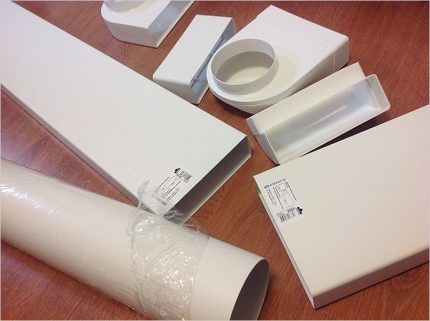
A 100 mm circular duct has the same performance as a duct box 55 × 110 mm. A circular channel of 125 mm and a rectangle of 60 × 204 mm are practically equivalent in air throughput.
A 200 mm round pipe is available without a wide range of connecting parts. An air duct with a rectangular section of 90 × 220 mm corresponds to a round pipe with a diameter of 150 mm, but is rarely used in practice due to its high cost.
To gain credibility with the developers of private houses in plastic pipes helped such wonderful characteristics as:
- ability to absorb noise and heat;
- perfectly smooth surface allowing air to pass through the channel at high speed;
- lack of corrosion, making it possible to lay pipes in rooms with high humidity;
- indifference to aggressive influences, ensuring long-term operation;
- walls treated with antistatic, preventing the accumulation of electrical charges, dust settling inside the channel;
- sufficient strength and light weight;
- simple and understandable assembly process of enlarged nodes and spatial systems;
- manufacturing of parts in accordance with GOST and TU with obtaining certificates for compliance with sanitary and hygienic requirements;
- relatively affordable price.
Among the shortcomings of PVC pipes, low fire resistance, fear of freezing temperatures, and the need for antistatic treatment can be noted.

The white color of the plastic is in perfect harmony with the elements of room decoration, often the air ducts hide behind drywall with subsequent decoration.
Low height polymer boxes helps to reduce the space between the floor slab and the false ceiling. Thus, maintain an acceptable height of the room and its cubic capacity.
Ventilation device made of polymer pipes
Subject to certain rules, the installation of PVC ducts is quick and easy. A significant role in this belongs to the methods of joining individual parts. A huge selection of connecting parts is offered: angles, bends, tees, plugs. If one part fails, it is easy to dismantle it and replace it with a new element.
The use of thermal insulation shelters
In unheated rooms, polymer channels are wrapped with insulating materials. Otherwise, the pipes will be covered with snow frost in the winter.
As a heater are used:
- foamed polyethylene, coated with foil on one side and coated with adhesive on the other;
- rubber layer with the same coatings, this material is much more expensive than the first.
Before thermal insulation, the surface of the duct is cleaned of dust and dirt. Seams are sealed with a special foil tape.
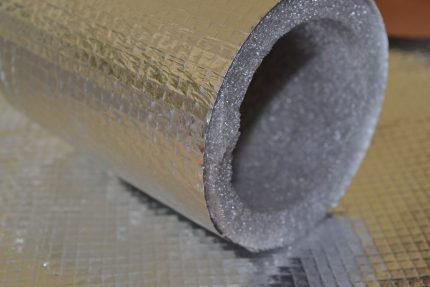
The cross-linked polyethylene heat insulator is manufactured using a special technology that creates linear and transverse molecular bonds. The material is very durable, flexible, not losing shape after being squeezed.
The foam rubber thermal insulation has a microporous structure. The material is resistant to aggressive environments, perfectly retains heat. It has a foil layer that prevents heat loss, provides sound insulation. Thanks to its high ignition temperature, it protects flammable materials from fire.
Mineral wool slabs are used for thermal insulation of volumetric air ducts, especially during street laying of routes.
Design and preparatory work
Before starting design work, you should decide on the choice of ventilation system.
It is of three types:
- supply and exhaust with air circulation due to natural gravity;
- supply and exhaust with mechanical motivation for the movement of air flows;
- combined using the first and second type.
Natural air circulation depends on weather conditions. In the hot season, when the temperature inside the house and on the street is equalized, the inclusion of a retracting force is required due to the installation of electric fans in the channels. On sale there are devices oriented to installation in a ventilation system made of polymer plastic.
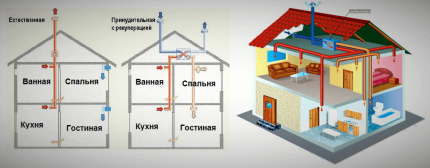
Installation is carried out according to a previously developed ventilation project. The complex structure of the ventilation complex will require contacting professional designers who will tell you how to assemble a plastic ventilation system.
For exact air duct area calculation and their location you need to have a certain set of knowledge. Take into account the established standards and make calculations according to a certain algorithm.
It is possible for a person who is able to independently study the basic norms and rules of design to complete the working drawings of a simple ventilation unit on his own.
The calculation of the cross section of the ducts
To calculate the parameters of the elements of the ventilation system, one should be guided by the instructions of SP 54.13330, SP 60.13330, SanPiN 2.1.2.2645.
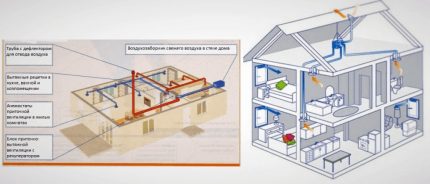
Three counting methods are proposed:
- by the number of full air turnover in the room for 1 hour;
- according to sanitary requirements;
- according to the total area of the rooms.
Multiplicity of air exchange for living rooms - 1 time / hour.
Kitchen with gas 4 hotplates - 90 m3/ hour plus additional 100 m3/hour.
Kitchen with electric stove - 90 m3/hour.
Bathroom, toilet - 25 m3/hour.
Room with a solid fuel boiler - 1 + 100 m3/hour.
Boiler room with a gas unit - 3 + air volume for fuel combustion.
The algorithm for calculating the multiplicity of air circulation
To determine the diameter of the ducts, the standard hourly air flow rate for each room and in general for the inflow and outflow in the system is found:
- The volume of air in each room will be equal to its cubic capacity. To determine it, multiply the length of the room by the width and height.
- Take into account the standard values of air turnover for each room and determine the hourly air flow.
- The results are rounded up and summarized separately for air flow and its removal.
- Maintaining a balance of air inlet and outlet is the basis of calculation.
- The obtained total hourly air flow rate is used to determine the size of the main supply and exhaust ducts.
- Set the required air speed - 3-4 m / s.
- From the diagrams in the normative guides find the desired pipe diameter.
- By special tables there you can find a box of equivalent section.
The working drawings and diagram will tell you how to assemble a plastic ventilation system in accordance with the designed power. From perform independently according to the calculation.
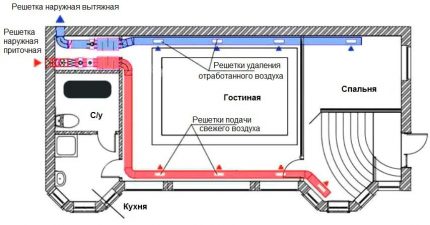
Specific locations of the ventilation ducts are noted, axial lines are drawn, the points of attachment of the ducts are marked. The presence of drawings provides accurate marking of the passage of ventilation ducts, punching holes in walls and ceilings.
Connecting fittings and installed equipment
To connect straight parts into a spatial branched network, typical fittings are used:
- check valves;
- tees - fitting with three holes, connects two parts of the main channel, a side branch is connected to the third output;
- crosses - for connecting two side branches;
- adapters from a round pipe to a rectangular one, from one size to another;
- bends for turning the ventilation duct;
- couplings;
- caps and lattices.
The non-return valve in the ventilation ducts controls the movement of air in the desired direction. It does not allow reverse thrust to appear. Design check valve very simple: the blade opens when the air stream moves in the direction specified by the project, when it is moved back, it blocks the passage of the channel.
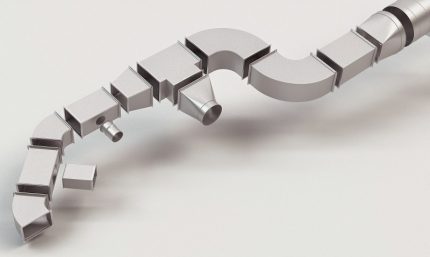
On the supply ducts, filters are installed to clean the air from dust and small debris. With a lack of natural fresh air through the windows and vents in the walls of the building are mounted supply valves.
Due to the pressure difference inside and outside the building, street air will enter the room in gravity ventilation networks.However, her work may be interrupted in the summer, when the pressure outside the window and indoors is equalized. In order to create a stable ventilation system that does not depend on weather conditions, supply or exhaust fans are installed in the ventilation duct system.
To heat the supply air in the cold season in the attic rooms of the house set recuperators. The principle of their work is to transfer the heat of the removed air stream to the newly incoming air volume.

To extract from the stove, a separate exhaust duct is mounted. Ventilation grilles in rooms are equipped with check valves. The technological process carried out by a team of professional installers is not much different from installing plastic ventilation with your own hands.
The procedure for creating the ventilation system of a private house described below can be considered a guide to action for fans to do everything on their own.
Installation of a complex of ventilation from polymer pipes
At the preparatory stage, the entire range of parts is prepared according to the design specification. For insurance, increase the supply of fittings and fasteners by 10 percent.
You will need a simple set of tools:
- for cutting plastic pipes and ducts a hacksaw for metal or wood, to speed up work - a small saw "grinder";
- punch for drilling holes in walls and ceilings;
- sandpaper, glue, sealant, mounting tape;
- tape measure, marker;
- screwdriver.
Begin work with the assembly of enlarged units using the entire arsenal of fittings. The main element of the assembled modules and ducts is a rectilinear duct or pipe with typical sizes. Round pipes and rectangular boxes made of PVC have a length in the range from 0.35 to 2.5 meters.
For smooth cutting on the surface of the box or pipe draw an exact cut line. You can use a laser tool. Sawing strictly on the intended line. After cutting, smooth ends remain without burrs and roughnesses.
A large section is applied to the wall or ceiling, the binding is specified, the attachment points are fixed in the design position.
When piping, it should be borne in mind that each angle of rotation reduces the efficiency of the system. The smaller the total length of the ducts, the higher their performance. For laying ducts in a private house, it is better to use straight-line parts 2.5 meters long so as not to make unnecessary connections.
Air velocity in channels with a circular cross section is higher than in rectangular ducts. But to save space, they often use flat boxes.
To insure against the formation of condensate, drainage holes are made in the pipes. To remove dew drops, the horizontal channels give a slope of 0.01-0.015.
Cooker hood connected to exhaust duct by means of an adapter from round to rectangular section. The connection point is sealed with silicone mastic.
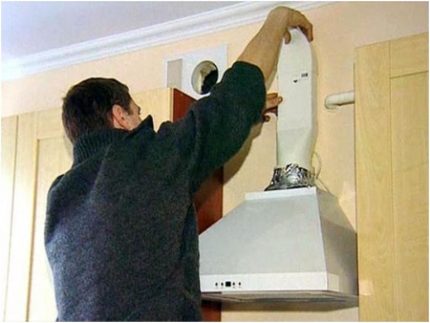
To pass through the wall, the duct is placed in the sleeve. Channel exits are closed with decorative grilles. The air duct slack should not exceed 50 mm.
Wiring of ventilation ducts in a low-rise building
On the example of a typical residential building, you can learn how to assemble a ventilation system made of PVC plastic.
In a two-story cottage with a standard set of rooms, laying of one vertical exhaust channel with tees is required to connect the side outlets to the living rooms. With the help of this plastic duct, stuffy air from the bedrooms and the living room will be transported to the attic.
Nearby, the same supply channel descends from the attic to the first floor with the wiring of the side branches along the fresh air supply zones to replace the remote one.
For the kitchen, there are two ducts:
- a separate exhaust channel for extracting above the stove, going from the first floor to the attic;
- conventional exhaust duct.
Autonomous exhaust ducts are pulled into the bathrooms to remove fumes from the bathroom and air from the toilet.
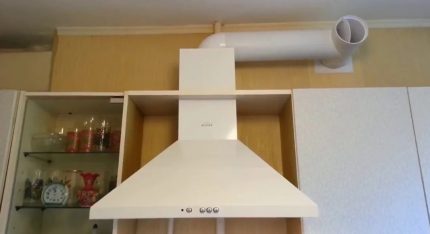
The assortment of fittings for plastic ducts has round plastic holders for fastening pipes to a flat surface.
For boxes, rectangular mounts of appropriate sizes are provided.
Installation process:
- a hole is drilled in the wall or ceiling with a puncher:
- using dowels and screws, fix the holders or brackets.
Plastic fasteners work like latches, tightly clasping a fixed element. As fastenings to the ceiling, metal suspensions for drywall can be used.
On the ducts running under the ceiling, tees and bends are also installed to supply or remove air from different areas of the apartment building.
All channels are displayed in the attic and there, using flexible round ducts, are connected to the internal unit of the system. Adapters for attaching attic round pipes are placed under the ceiling of the last floor.
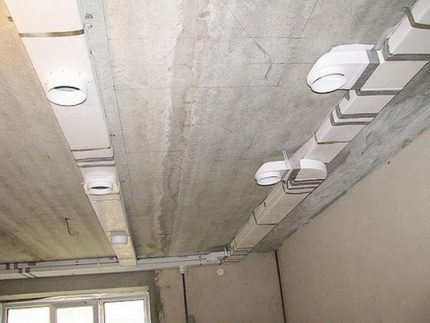
Depending on the chosen method of ventilation in the attic, they place one powerful device that provides exhaust and air flow throughout the house, or fans are placed in each duct.
In a cold attic, pipes are necessarily insulated. The height of the ventilation ducts relative to the roof ridge is determined as follows: in the drawing, a horizontal line is drawn from the roof ridge, another beam is drawn upward from it by 10 degrees. He will be the claim height of the vent pipes. If the distance from the roof ridge to the ventilation pipe is less than 150 cm, it rises above the roof ridge by 50 cm.
Silicone joint sealant is white, retains elasticity when dried. For more reliable sealing use metallic tape.
For better air circulation in the doors of the rooms below leave free space.
Methods for joining plastic pipes
Polymer pipes are interconnected in several ways:
- by means of a sleeve put on or inserted into the pipe;
- thermistor fittings made of special polyethylene with a metal spiral;
- butt welding using welding equipment.
Thermistors are heated using electric current, the polymer melts, and a welded joint with a high degree of tightness and strength is obtained.
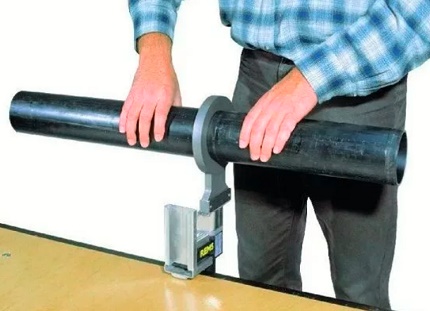
In butt welding, plastic surfaces are pressed tightly against each heating element, then connected with a confident motion. At the output, a weld is obtained, which is not inferior in strength to the base material.
In self-assembly it is recommended to use the simplest option for couplings - couplings. To install them you will need soldering iron for polymer pipes, the so-called “ironing”. For one-time work, it is more practical to rent it.
Regulatory requirements for laying ventilation pipes
Compliance with the regulatory requirements for binding ducts to walls and ceilings, to each other, to utility networks will allow installation without problems and troubles with expert acceptance of work.
The distance between the mounts is not more than one meter. Contact with metal parts of the suspended ceiling is excluded so that noise and vibration are not transmitted to it.

Vertical deviation of the channel is allowed no more than 2 mm per 1 meter of pipe.
The minimum distance to utilities is 250 mm. Before wiring - at least 300 mm.
The smallest distance between two round ducts is 250 mm. Plug-in connections are placed at a distance of at least 100 mm from the places of passage through the walls and floors.
It is allowed to combine the channels of the bathroom, bathroom, technical rooms with the installation of check valves.
For heating boilers and a fireplace, the use of plastic pipes is prohibited.
The assembly of plastic elements into large blocks and spatial structures is possible even for an inexperienced master with a minimum set of tools. This applies to ventilation systems with natural air circulation without the installation of special complex equipment and automation units.
For the construction of a complex system with the installation of ventilation equipment, recovery units, control units, you may have to seek help from installers from an organization specializing in the assembly of ventilation and heating systems.
In any system, even the simplest one, the exact calculation of the parameters, the presence of working drawings or layouts for installing and fixing air ducts, and installing ventilation equipment are important.
Conclusions and useful video on the topic
The video clearly demonstrates how exhaust and supply ducts are laid in the kitchen and in the bathrooms. The installation locations of check valves and electric fans are shown. Explained the need for their installation:
Summing up, we can say that the list of advantages of polymer pipes far exceeds their disadvantages. This is a decisive moment in the choice of material for the installation of the ventilation system.
The ease of construction, the unification of parts, and simple installation brought plastic ducts to the forefront in the equipment of low-rise residential buildings, domestic and technical premises, and low-rise public buildings.
Tell us about how you installed plastic ducts in your own cottage or in a country house, how you assembled a channel for connecting the hood in the kitchen. Share technological features that may be useful to site visitors. Please leave comments in the block form below.

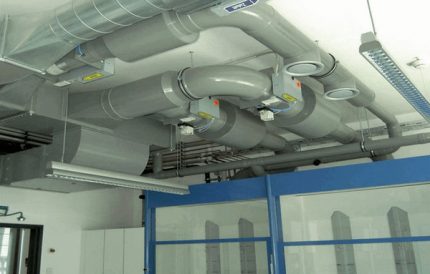
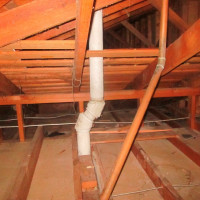 Arrangement of ventilation from sewer pipes: the construction of ducts from polymer products
Arrangement of ventilation from sewer pipes: the construction of ducts from polymer products 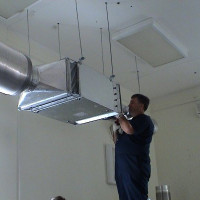 How to install ducts: installing flexible and rigid ventilation ducts
How to install ducts: installing flexible and rigid ventilation ducts 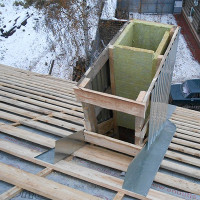 How to make a roof ventilation duct: a detailed construction guide
How to make a roof ventilation duct: a detailed construction guide 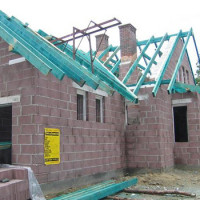 How to arrange ventilation ducts in a private house: design rules and construction manual
How to arrange ventilation ducts in a private house: design rules and construction manual 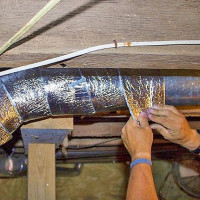 How and how to insulate the ventilation pipe: rules and regulations for insulation of ducts
How and how to insulate the ventilation pipe: rules and regulations for insulation of ducts 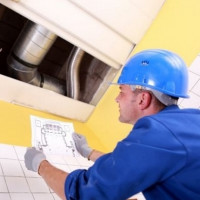 Ventilation restoration: causes of reduced efficiency and duct restoration
Ventilation restoration: causes of reduced efficiency and duct restoration  How much does it cost to connect gas to a private house: the price of organizing gas supply
How much does it cost to connect gas to a private house: the price of organizing gas supply  The best washing machines with dryer: model rating and customer tips
The best washing machines with dryer: model rating and customer tips  What is the color temperature of light and the nuances of choosing the temperature of the lamps to suit your needs
What is the color temperature of light and the nuances of choosing the temperature of the lamps to suit your needs  Replacement of a geyser in an apartment: replacement paperwork + basic norms and requirements
Replacement of a geyser in an apartment: replacement paperwork + basic norms and requirements